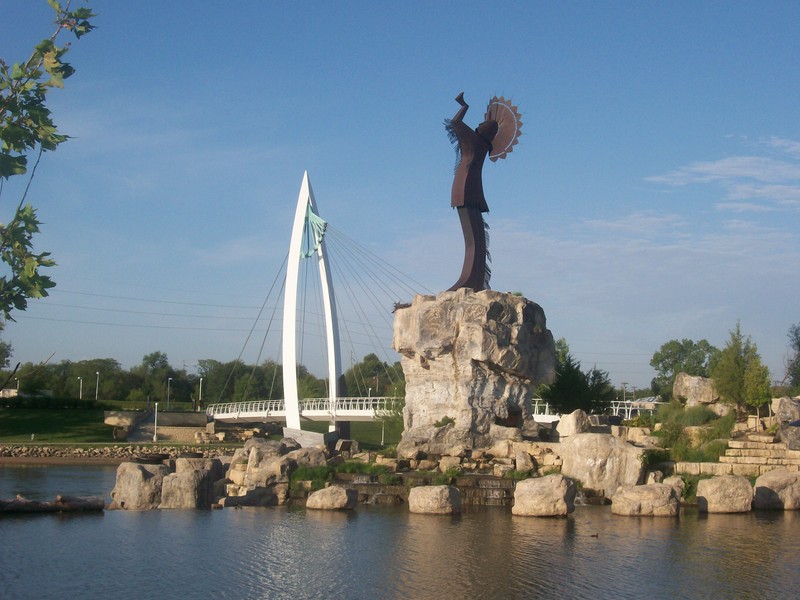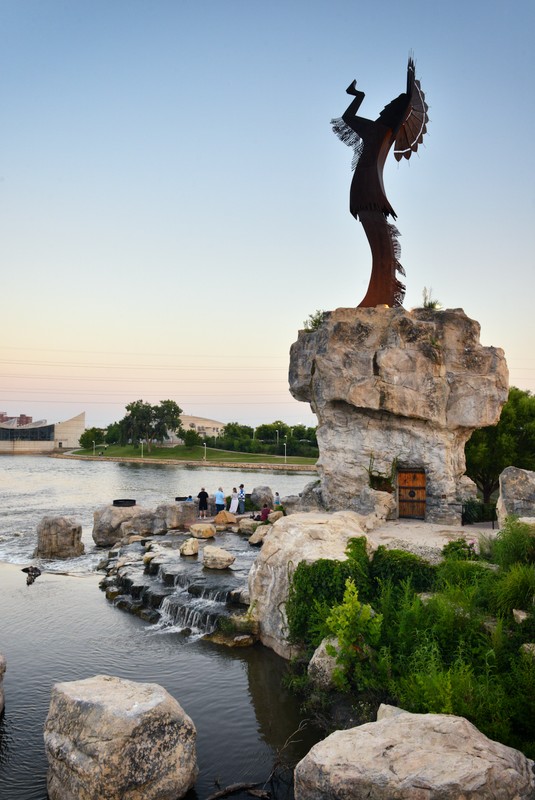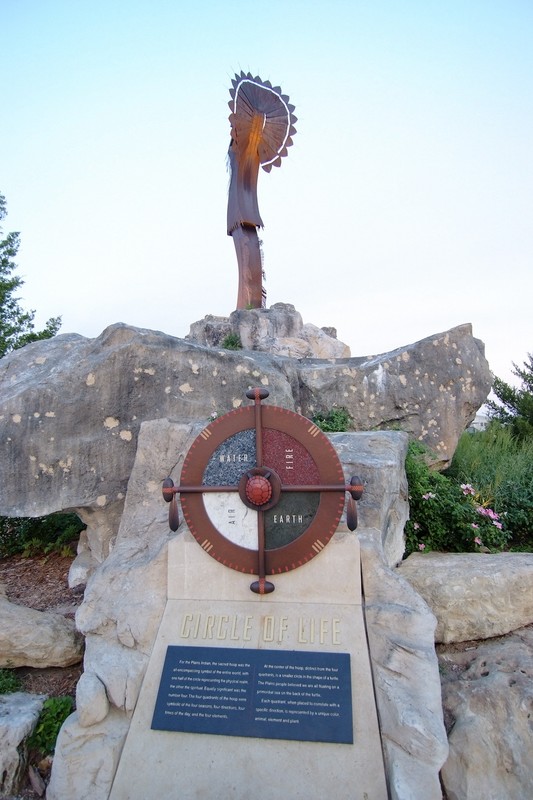The Keeper of the Plains
Introduction
Text-to-speech Audio
Created as part of a $20-million riverfront restoration project and dedicated in 1974, The Keeper of the Plains has become the symbol of the city of Wichita. The 45-foot steel sculpture by Kiowa-Comanche artist Blackbear Bosin stands at the junction of the Arkansas and Little Arkansas rivers. The sculpture stands on a 30-foot tall platform adjacent to the Mid-America All-Indian Center. The sculpture depicts a man who stands “…with hands raised in supplication to the Great Spirit.” The statue acts as a visual reminder of the local tribes that inhabit the area (past and present) and the significant roles Indigenous people played in American history.
Images
From its creation in 1974, the Keeper of the Plains has become the symbol of the city of Wichita.



Backstory and Context
Text-to-speech Audio
The Keeper of the Plains was commissioned in 1974 by the city to mark the United States Bicentennial. The 45-foot steel sculpture was created by Kiowa-Comanche artist Francis Blackbear Bosin (1921-1980) also known by his Kiowa name Tsate Kongia (meaning “black bear”). Blackbear Bosin was a self-taught artist and sculptor. His early works comprise of representations of early Indian life while his later works became increasingly complex depicting a combination of recognizable and surrealist elements in vivid paint colors.
Created as part of a $20-million riverfront restoration project and dedicated in 1974, The Keeper of the Plains has become the symbol of the city of Wichita. The striking sculpture stands at the junction of the Arkansas and Little Arkansas rivers and adjacent to the Mid-America All-Indian Museum. The sculpture depicts a man who stands “…with hands raised in supplication to the Great Spirit.” The plaza where the sculpture is situated also includes elements that represent the four elements that make up life: earth, air, fire and water. Surrounding the base of the statue are multiple displays which describe the local tribes that used to inhabit this area, as well as several fire pits which sometimes light up to illuminate the statue at night.
Visitors to the city should consider watching the nightly lighting of the "Ring of Fire" around this platform, which burns nightly at 7p.m. from November to March and 9 p.m. from March to November. The fire pits, which are known as the Rings of Fire, are lit mannually for public safety and run in 15 minute increments. They are generally lit once a night around 9 pm during the summer and sunset during the winter.
Cite This Entry
M., Ben and Humanities Kansas. "The Keeper of the Plains." Clio: Your Guide to History. March 2, 2023. Accessed February 15, 2025. https://theclio.com/tour/2386/6
Sources
"Keeper of the Plains." City of Wichita. Accessed December 9, 2013. http://www.wichita.gov/Government/Departments/Arts/Pages/Keeper-of-the-Plains.aspx
Nightengale, Julia. ‘Let’s stay on the right side of history:’ Vigil for Iranian women held in Wichita, the sunflower.com. October 2nd, 2022. Accessed December 9th, 2022. https://thesunflower.com/66619/news/lets-stay-on-the-right-side-of-history-vigil-for-iranian-women-held/.
Wichitans turnout for pipeline protest at Keeper of the Plains, kwch.com. September 13th, 2016. Accessed December 9th, 2022. https://www.kwch.com/content/news/Wichitans-turnout-for-pipeline-protest-at-Keeper-of-the-Plains-393330021.html.

